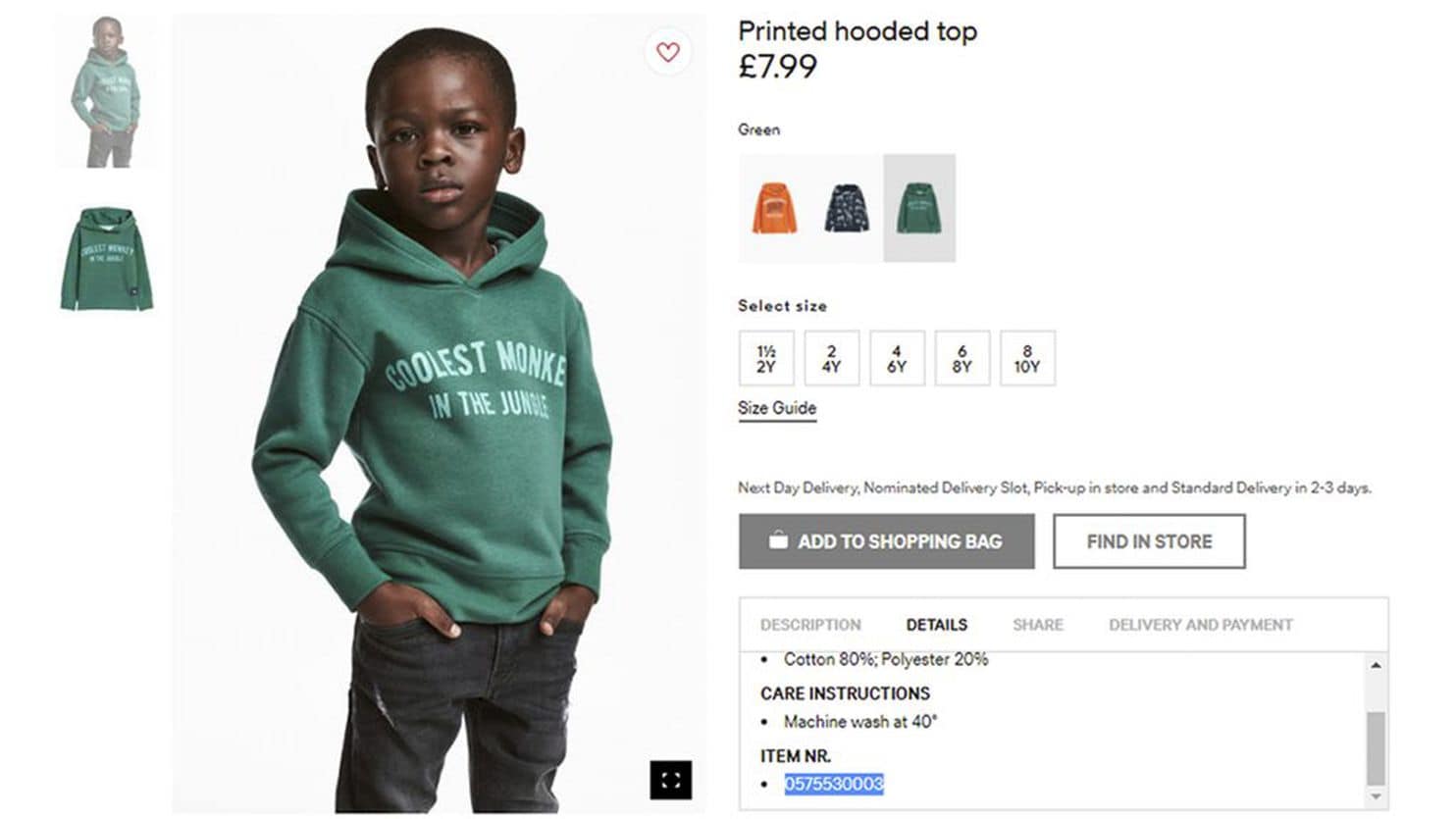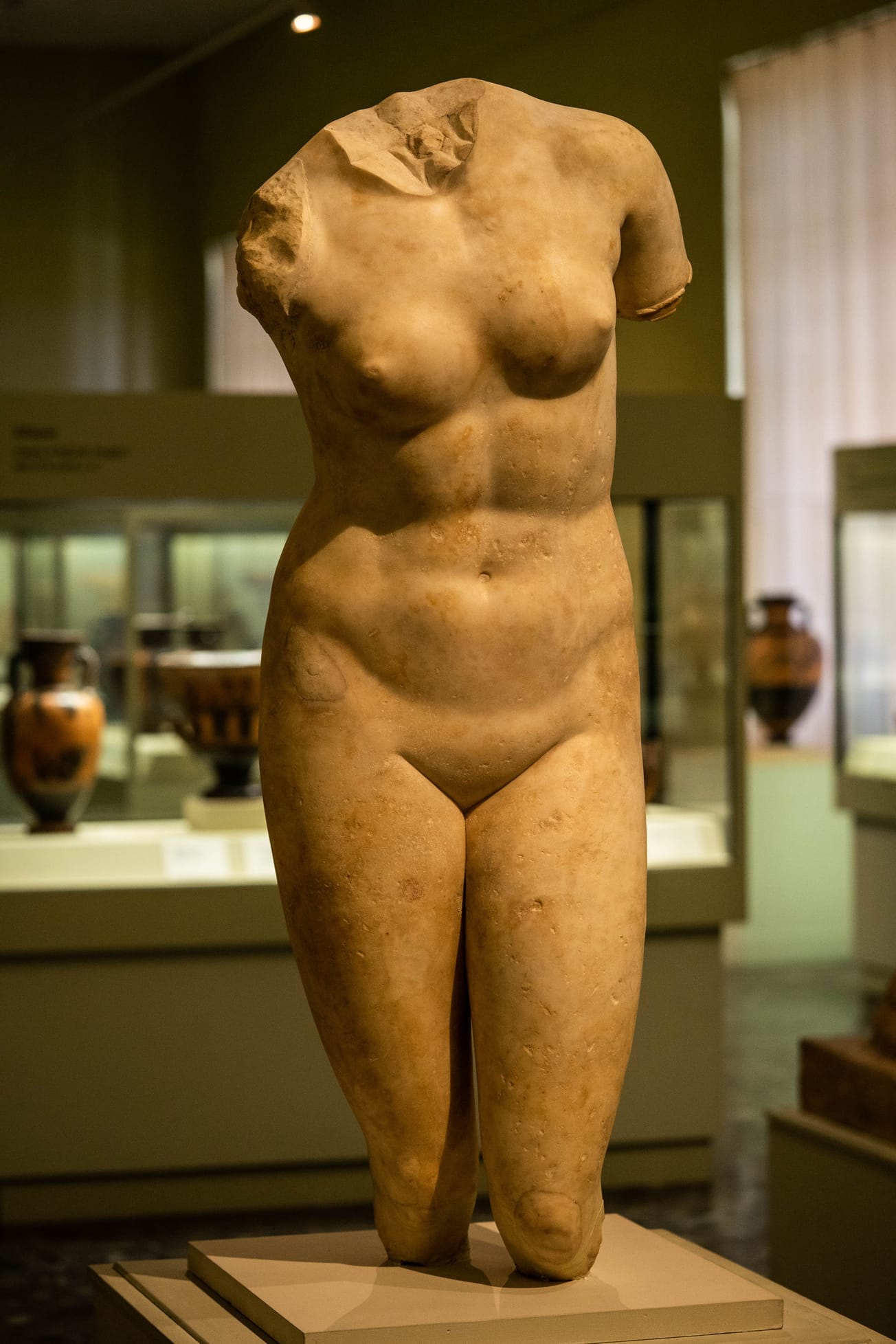First Year Spanish Student Jemima Carr-Jones discusses the scandalous green jumper that has damaged H&M's reputation.
Last month, H&M UK released an advertising campaign on their website in which a young black boy, Liam Mango, models a green jumper which has etched on it ‘Coolest monkey in the jungle’. This has caused monumental controversy in the media-of-late due to racial connotations drawn between ‘monkey’ and the boy’s African heritage. The image has now been taken down and a series of apologies released by the company;
‘We understand that many people are upset about the image of the children's hoodie. We, who work at H&M, can only agree. We're deeply sorry that the picture was taken, and we also regret the actual print. Therefore, we've not only removed the image form our channels, but also the garment from our product offering. It's obvious that our routines haven't been followed properly. This is without any doubt. We'll thoroughly investigate why this happened to prevent this type of mistake from happening again.’
‘This image has now been removed from all H&M channels and we apologise to anyone this may have offended’.
The company have since additionally hired a diversity leader.
Try not to be who you are not. After 'monkey hoodie' scandal, H&M hires diversity leader https://t.co/fFi5z8HCtK #monkeyinthejungle #hm pic.twitter.com/L6ufe5p6ih
— George Enis (@gorgenis) January 17, 2018
Unfortunately, this process has lost the Swedish multinational company- who have previously collaborated with a multitude of big names such as Karl Lagerfeld, Madonna, Stella McCartney, Roberto Cavalli, Versace and Beyoncé- partnerships with singers G-Eazy and The Weeknd who took to Twitter writing; ‘Woke up this morning shocked and embarrassed by this photo. I'm deeply offended and will not be working with @hm anymore…'
They were not the only A-Listers to express their opinions on the subject matter: Lebron James added to the backlash by tweeting; ‘I see a Young King!! The ruler of the world, an untouchable Force that we can never be denied!’. Shortly after, James reposted the image on his Instagram, editing on a crown where the original message had been positioned. Sean Combs aka. ‘Diddy’ likewise responded, instead altering the message to write ‘Coolest king in the world’, tweeting; ‘Put some respect on it!! When you look at us make sure you see royalty and supernatural God sent glory!! Anything else is disrespectful.’
woke up this morning shocked and embarrassed by this photo. i’m deeply offended and will not be working with @hm anymore... pic.twitter.com/P3023iYzAb
— The Weeknd (@theweeknd) January 8, 2018
Meanwhile in Sweden, the parents of the child Terry Mango and Frank Odhiambo, have stated that they do not believe the image to be of racist content. Of the couple Terry Mango has been especially penalised by critics for her comment instructing people to ‘get over it’ and has since expressed that she is now viewed as ‘an embarrassment’ to black and African-American people for defending H&M.
Interestingly, this is not the first time that H&M has required defending in the recent past, the company is no stranger to media storms and public scandal: In 2013 issues arose regarding a collection of faux-feather headdresses released in Canadian stores as many perceived the accessories to be ‘offensive to Canada's First Nations aboriginal peoples’. Although the company swiftly removed the item from the annual summer music festival collection, an official apology was never issued.
In 2015 H&M South Africa were accused of having a distinct lack of black models in their photography. The company published a response stating; ‘H&M's marketing has a major impact and it is essential for us to convey a positive image. We want our marketing to show our fashion in an inspiring way, to convey a positive feeling’. This, of course, proved problematic in that this directly insinuated that the brand views white models as disseminating a more 'positive image'. Now, in 2018, there is of course the debate of the green hoodie.
If you ask me, I’d say first, one must consider the dictionary definition of racism, which is: ‘prejudice, discrimination, or antagonism directed against someone of a different race based on the belief that one's own race is superior.’ In light of this, I reject the notion that the green hoodie with the aforementioned words written on it are racist as they simply do not insinuate prejudice or superiority among races. It is well known as part of British culture calling young children ‘monkeys’ and other variations, such as ‘cheeky monkey’, is perfectly normal and purely a term of endearment.
.@HM closes stores in South Africa following protests against “Racist” ad: https://t.co/BBqLO7M1e7 pic.twitter.com/TJJWdVmizo
— Highsnobiety (@highsnobiety) January 15, 2018
Would you suppose had the hoodie said that the child was a ‘silly sausage’ that H&M thought the child to be a ‘meaty child’? Of course not! The hoodie was admittedly tactless in a time of such societal scrutiny of what is politically correct. However, in this scenario I believe there is only racism in considering there to be such a thing - the supposition of a link between monkeys and the boy’s race, his African heritage.
In light of this, I would say that it is highly unlikely that H&M’s objective was to cause serious offence, or to offend their consumers; this scandal has had zero benefit to the business. The green jumper has damaged the brand irrevocably with the Swedish clothing giant having to temporarily close their stores in South Africa due to protests and demonstrations. This is perhaps more a reflection of naive misguidedness and lack of liaison with diverse focus groups, rather than abject and intentional racism.
And you will be interested to know that Liam Mango to this day is blissfully unaware of the media storm his H&M modelling has created.
Featured Image: The Washington Post / H&M









